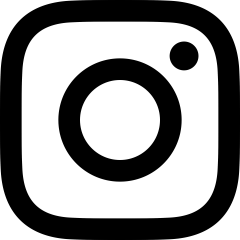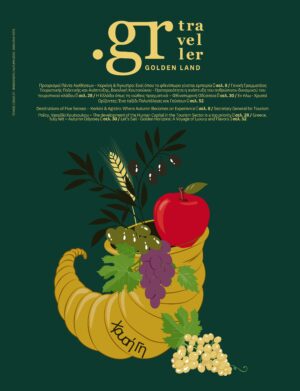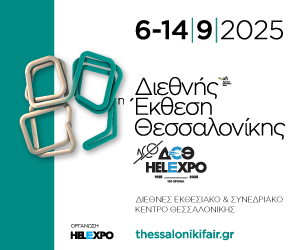Interview with the sculptor Mr.Michael Kassis to Panagiota Sourtzi

Photo by Yannis Kassis
“In Keramiko where I worked there was a very great painter, ceramist, hagiographer, Michael Martsuvanov [Martsuvanis] from Ukraine. He was a very great mind. He used to say to me every day, “My child, you have talent, you will be lost, go to the School of Fine Arts,” and I would tell him that if I go, what will I eat and who will help my brothers to study, because they are younger. At some point I closed my eyes and I said no matter what happens, whatever he wants to happen, let it happen, I’ll go and give and I went and gave. They told me where the art school was and I went and gave.”
“…in stone I was born, in stone I grew up, in stone I work, in stone I shall die.”
And so begins a career of over 60 years in art for the sculptor Michalis Kassis, who came to Athens from a village in Mani out of necessity to help his family financially.
A restless spirit, he did not stick to the norms of the sculpture he was taught.
And so the stone in his hands takes shape, a face in his own unique style, choosing which of the designs “hidden” inside it he will reveal.
The documentary, “Laluda”, which premieres in November and is dedicated to him, Mani and survival in stone, was the occasion to talk to the artist, seeking to compose his own portrait through his career in art and what “sculpted” the creator and his work.
“Without will nothing can be done”, he tells us with the simplicity and authenticity of a man who lived the difficulties of survival in the Greek countryside and managed to have his works adorn public spaces in Greece and abroad.
How did you make the decision to take up sculpture?
I didn’t even understand how I made the decision because we were born in stone as children, we grew up in stone, stone was our toys, we made our amades from stones, from thin slabs, our donkeys that we used to put them together and fight, our sheep, from various sticks, from various fruits.
Well, those were the first beginnings.
You lived with stone and was it a natural consequence to work with it, to become a sculptor growing up?
Growing up I felt like nothing else filled me but that and when I went and gave at art school, I didn’t know where it was.
But I was obsessed with going there.
Of course, the school disappointed me because when I went in with the first one, I found that they put you there and teach you how to be a copyist, that is, to put on a model, measure one finger, measure one eye, measure one ear and make the other one the same with the measurements.
And that didn’t fill me up.
I wanted something else.
My greatest study that I did, if I did at the school, was the few words I heard from April, who was a student of Burdell’s, and the amillah, the nobility that came through the children at the school, who carried various images from various classes of various customs and traditions.
These I was “grabbing”, that is, capturing them, and these are what interested me.
But my great, normal study is in the National [Archaeological] Museum.
There I “chatted” a lot with the ancient Greek sculptors [of the Archaic period] and they “told” me why they distort something to make it beautiful.
Because if they copied it from a model if they made it symmetrical and beautiful it wouldn’t be good.
They would deform it wherever they wanted, as much as they wanted.
Because they were the creators and they became the gods, I would say, for a time, inventing their own creatures and creating them.
I think the greatest art ever made by man is in the Museum of [Ancient] Olympia, which is before Phidias, before the classical era, and it’s directly in marble, without a model.
The kouroi, the daughters, all of that impressed me terribly, and so I learned as soon as I left school not to use even a minute model.

Photo by Yannis Kassis
Everything I make and everything I compose is from my imagination only as those great artists did, as I said, who mixed man with a horse, man with a lion, man with a triton.
They put them together so perfectly and so well and they distorted what they wanted to make it look more right, and that is the greatness, I think, of art.
So do you think that the sculptor and the artist in general should put his imagination, his thoughts on the stone, on the material?
Hey, sure!
Then he’s a creator, otherwise if you copy someone else’s model or statue you’re a copyist.
When you measure all the details of a model posing there and there, poor thing, to make a living, well, you’re a copyist.
And the better a copycat you are, the more you get rewarded.
Did you ever need a model?
In all my projects, large or small, I have never used a model or a template, ever!
In art school I did that but more of a chore and more of a lesson I learned from a conversation in April who first showed us that Rodin says art is from the inside out.
Well, I noticed that and saw it so clearly in archaic sculpture.

Photo by Yannis Kassis
You said at the beginning that you grew up in stone.
You grew up in Mani and this has played an important role in your creative process. How have your personal experiences, the history and landscape of the region shaped your work?
But I don’t know that.
Mani is a dry boil, Greece is a dry boil.
Our walls are a stone and water, from there everything has been created.
The stone, I think I loved it and when I work on it, create it, I think I have the most beautiful girl.
I try not to throw away any of the stone, keep it all because it’s damage, meaning throwing away pieces of the stone.
Not to shake it too much, not to ruin its colors, to be able to make it show its colors more.
How do you choose the stone?
Many times the stone itself gives me my theme because every stone, a stumble on the road, as Alexiou had said, has a great value that is not understood.
Every piece of stone, every rock, every cliff has many drawings inside waiting for the creator to reveal them.
He sees it and chooses from its shape what he will make, what he will create, what will be most correct, the true one.

Photo by Yannis Kassis
What are the next steps for the artist? Does he ever stop?
In stone I was born, in stone I grew up, in stone I work, in stone to die.
So, the creator is always a creator, you say?
Hey, sure!
Sure!
But to be a creator, you don’t have to copy, we said.
And if you take elements, you take them and you have them stored in the storehouse of your mind that when someone asks you, make me an animal, make me an insect, you have it solid in your “photo studio” and nature, itself, brings it before you and you create it and make it into sculpture into a drawing, into whatever.
That is, you have impressions of it inside, but you have to have it properly and definitely captured.
So you observe nature to get ideas for your sculptures.
There is no greater wisdom and no greater teacher than nature.
It has made everything so well thought out and it works like clockwork that when we interfere with nature we may be doing ourselves harm.
We do good and we do harm too.
It is said somewhere by Rodin, a great sculptor, “The whole world sees, the artist must observe.”
Do you think young artists today have that? As an experienced sculptor do you see young people as having the skills to be truly creative?
The young people… they have me very worried.
Of course they will find their way, they will end up somewhere and we must help them as much as we can.
I think they “eat up” a lot of time with electronics because there are terrible interests behind it.
You see let’s say the kids whether they are alone or with others, each one has a mobile phone in front of them and they are in their own world and see what they are “served”.
He himself is not tortured to find it.
Man should strive from a young age to be omniscient.
Everything interests an artist and he can use everything in his art without copying it exactly.
They are related to each other.
Your sculptures depict, mainly, faces, people. Does this have any symbolism for you?
You’re trying to be God, you know?
Be God for a while to fix it.
Of course, art can say more things than people with a language can speak.
It doesn’t have a language, but it speaks in a different way.
I’m trying to give the other way.
If I succeed, that’s fine.
But a bird stone and such I never worked because as long as the stone resisted me, it was hard, I maneuvered and worked.
What would you say to young artists today, to those who are starting their career in art?
I can say a lot of things to them but I think when your talent is with you, nothing can stop you.
Of course, there are also bad luck that if the power you have inside you is not so strong to defeat adversity, you may give up but the passion inside you will eat away at you.
I want to tell the kids, a happy person is one who finds joy through his work.
Then he is the happiest person, otherwise he will be unhappy no matter what he does and no matter what he gets.



















